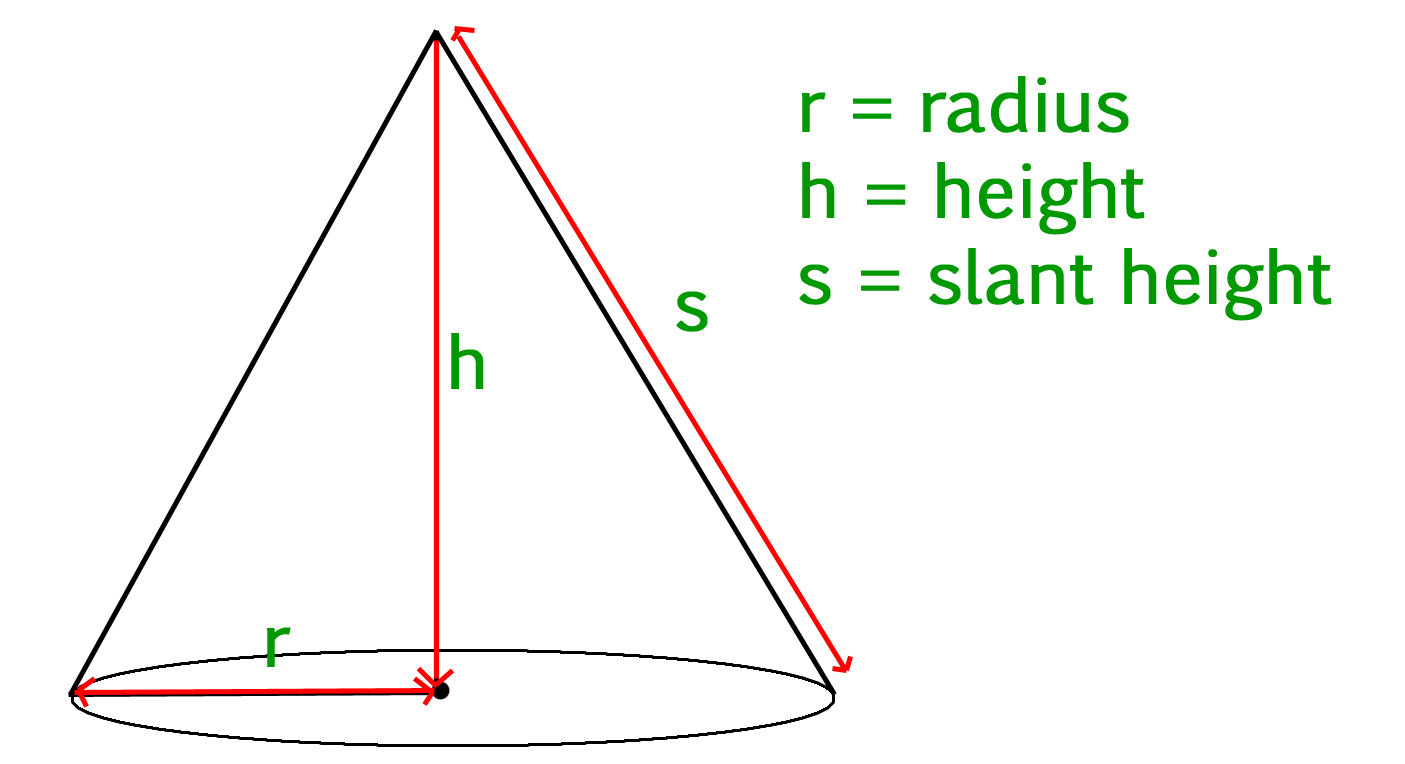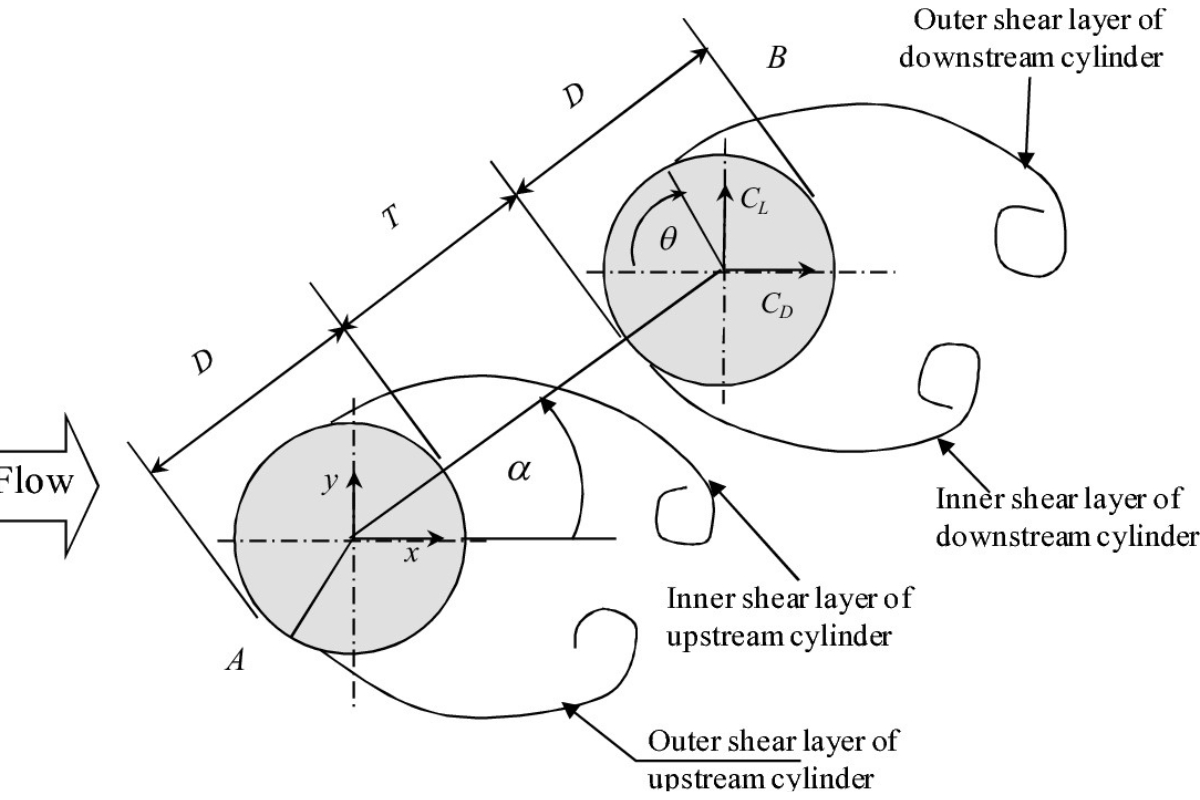Home>Mathematics>The Ultimate Guide To Calculating Prism Volume – Master The Art Of Geometry!


Mathematics
The Ultimate Guide To Calculating Prism Volume – Master The Art Of Geometry!
Published: January 4, 2024
Learn how to calculate prism volume with our comprehensive guide. Master the art of geometry and improve your mathematics skills today!
(Many of the links in this article redirect to a specific reviewed product. Your purchase of these products through affiliate links helps to generate commission for Noodls.com, at no extra cost. Learn more)
Table of Contents
Introduction
Welcome to the ultimate guide to mastering the art of calculating prism volume! Whether you're a student delving into the fascinating world of geometry or a math enthusiast seeking to expand your knowledge, understanding how to calculate the volume of prisms is a fundamental skill with a wide range of practical applications. In this comprehensive guide, we will explore the principles of prism volume calculation, from the basic formulas for rectangular prisms to the more complex calculations for triangular and hexagonal prisms. By the end of this journey, you will have a solid grasp of the concepts and techniques needed to conquer prism volume calculations with confidence.
Geometry, the branch of mathematics that deals with the properties and relationships of shapes, has been a cornerstone of human knowledge for millennia. From the ancient civilizations of Egypt and Mesopotamia to the groundbreaking discoveries of Euclid and beyond, the study of geometry has played a pivotal role in shaping our understanding of the physical world. At the heart of geometry lies the concept of volume, which measures the amount of space occupied by a three-dimensional object. Understanding how to calculate the volume of prisms is a crucial aspect of mastering geometry, as prisms are ubiquitous in both natural and man-made structures.
Throughout this guide, we will delve into the intricacies of calculating prism volume, exploring the specific formulas and methods for different types of prisms. From the familiar rectangular prism to the more exotic hexagonal prism, each variant presents its own unique challenges and opportunities for exploration. By unraveling the mysteries of prism volume calculation, you will not only sharpen your mathematical acumen but also gain a deeper appreciation for the role of geometry in our everyday lives.
So, fasten your mathematical seatbelt and prepare to embark on an enlightening journey through the world of prism volume calculation. By the time you reach the end of this guide, you will be equipped with the knowledge and skills to tackle prism volume calculations with ease and confidence. Let's dive in and unlock the secrets of prism volume together!
Understanding Prism Volume
Prism volume, a fundamental concept in geometry, refers to the measure of space occupied by a prism, a three-dimensional shape characterized by parallel and congruent polygonal bases connected by rectangular or parallelogram faces. Understanding prism volume is essential for various real-world applications, from architecture and engineering to manufacturing and construction.
To comprehend prism volume, it is crucial to grasp the concept of volume itself. In geometry, volume represents the amount of space enclosed by a three-dimensional object. For prisms, this involves calculating the total space encompassed within the shape, taking into account the dimensions of its base and the perpendicular distance between the two bases.
The volume of a prism can be calculated using the formula V = Bh, where V denotes the volume, B represents the area of the base, and h signifies the height of the prism. This formula applies to all types of prisms, whether they are rectangular, triangular, hexagonal, or any other polygonal shape.
Moreover, the volume of a prism can also be visualized as the product of the area of the base and the height. This intuitive interpretation underscores the fundamental relationship between the base, height, and overall volume of the prism. By understanding this relationship, one can develop a deeper appreciation for the geometric properties and spatial characteristics of prisms.
Furthermore, the concept of prism volume extends beyond abstract mathematical calculations. It has practical implications in numerous fields, such as architecture, where architects and designers rely on volume calculations to determine the spatial requirements of buildings and structures. Similarly, in manufacturing and engineering, understanding prism volume is crucial for designing and fabricating components with precise spatial specifications.
In essence, understanding prism volume is not merely an exercise in mathematical abstraction; it is a gateway to unlocking the spatial dimensions of the physical world. By mastering the principles of prism volume, one gains a powerful tool for analyzing and manipulating three-dimensional space, paving the way for innovation and problem-solving in a wide range of disciplines.
As we delve deeper into the specific methods for calculating the volume of different types of prisms, it is important to keep in mind the foundational principles of prism volume. By doing so, we can appreciate the practical relevance and profound significance of this fundamental geometric concept.
With a solid understanding of prism volume, we are poised to explore the specific techniques for calculating the volume of rectangular, triangular, and hexagonal prisms, each of which presents its own unique challenges and opportunities for exploration. Let's embark on this enlightening journey and unravel the mysteries of prism volume calculation.
So, let's delve into the specific methods for calculating the volume of different types of prisms, and gain a deeper understanding of this fundamental geometric concept.
Calculating Volume of Rectangular Prism
The rectangular prism, also known as a rectangular solid or cuboid, is a three-dimensional shape characterized by six rectangular faces, where each pair of opposite faces is parallel and congruent. Calculating the volume of a rectangular prism is a fundamental exercise in geometry, and it involves applying a straightforward formula to determine the amount of space enclosed by the prism.
To calculate the volume of a rectangular prism, we can use the formula V = lwh, where V represents the volume, l denotes the length, w signifies the width, and h represents the height of the prism. By multiplying the length, width, and height of the rectangular prism, we obtain the total volume enclosed by the shape.
Visualizing the process of calculating the volume of a rectangular prism, we can imagine filling the prism with unit cubes, each representing a volume of 1 cubic unit. By stacking these unit cubes within the prism, we can ascertain the total number of cubes required to completely fill the space, which corresponds to the volume of the prism.
Furthermore, the formula V = lwh can be interpreted as the product of the area of the base (l * w) and the height (h) of the prism. This intuitive interpretation underscores the relationship between the base, height, and overall volume of the rectangular prism. By understanding this relationship, we gain insight into the geometric properties and spatial characteristics of the prism.
In practical terms, the ability to calculate the volume of a rectangular prism is invaluable in various real-world scenarios. For instance, in construction and architecture, architects and builders rely on volume calculations to determine the spatial requirements of structures, ensuring that materials are utilized efficiently and spaces are optimized for their intended purposes. Similarly, in manufacturing and engineering, precise volume calculations are essential for designing components and structures with accurate spatial specifications.
By mastering the technique of calculating the volume of a rectangular prism, one gains a versatile tool for analyzing and manipulating three-dimensional space, enabling the exploration of innovative solutions and the efficient utilization of resources.
In summary, the process of calculating the volume of a rectangular prism is a fundamental exercise that not only sharpens mathematical skills but also holds practical significance in diverse fields. By understanding the principles and methods for determining the volume of a rectangular prism, one gains a powerful tool for navigating the spatial dimensions of the physical world and unlocking a realm of geometric possibilities.
Calculating Volume of Triangular Prism
The triangular prism is a three-dimensional geometric solid characterized by two triangular bases and three rectangular or parallelogram faces. Calculating the volume of a triangular prism is an essential exercise in geometry, requiring the application of specific formulas and principles tailored to its unique structure.
To calculate the volume of a triangular prism, we can utilize the formula V = (1/2) * b * h * H, where V represents the volume, b denotes the base of the triangle, h signifies the height of the triangle, and H represents the height of the prism. The formula incorporates the area of the triangular base and the perpendicular height of the prism, providing a comprehensive method for determining the enclosed space.
Visualizing the process of calculating the volume of a triangular prism, we can envision the triangular bases as the foundation for the prism's spatial dimensions. By multiplying the area of the base (1/2 * b * h) with the height (H) of the prism, we obtain the total volume encompassed by the shape. This intuitive approach highlights the interplay between the base, height, and overall volume of the triangular prism, offering valuable insights into its geometric properties.
In practical terms, the ability to calculate the volume of a triangular prism holds significance in various real-world contexts. For instance, in architecture and engineering, understanding the volume of triangular prisms is crucial for designing and analyzing structural components, ensuring that spatial requirements are met with precision. Additionally, in fields such as manufacturing and construction, accurate volume calculations are essential for fabricating and assembling components with meticulous attention to spatial specifications.
By mastering the technique of calculating the volume of a triangular prism, one gains a valuable tool for navigating the intricacies of three-dimensional space, enabling the exploration of innovative solutions and the efficient utilization of spatial resources.
In summary, the process of calculating the volume of a triangular prism is a fundamental exercise that not only enhances mathematical proficiency but also holds practical relevance in diverse fields. By understanding the principles and methods for determining the volume of a triangular prism, one gains a powerful tool for unraveling the spatial dimensions of the physical world and unlocking a realm of geometric possibilities.
Calculating Volume of Hexagonal Prism
The hexagonal prism, a fascinating three-dimensional shape characterized by two hexagonal bases and six rectangular faces, presents an intriguing challenge when it comes to calculating its volume. This geometric solid, with its unique configuration, demands a specialized approach to determine the amount of space it encloses.
To calculate the volume of a hexagonal prism, we can employ a specific formula tailored to its distinctive structure. The formula for calculating the volume of a hexagonal prism is V = 3/2 * sqrt(3) * a^2 * h, where V represents the volume, a denotes the length of the side of the hexagon, and h signifies the height of the prism. This formula encapsulates the intricate relationship between the area of the hexagonal base, the height of the prism, and the spatial dimensions of the shape, providing a comprehensive method for determining its enclosed space.
Visualizing the process of calculating the volume of a hexagonal prism, we can envision the two hexagonal bases as the defining elements that establish the shape's spatial parameters. By multiplying the area of the hexagonal base (3/2 * sqrt(3) * a^2) with the height (h) of the prism, we obtain the total volume encompassed by the shape. This intuitive approach highlights the interplay between the base, height, and overall volume of the hexagonal prism, offering valuable insights into its geometric properties.
In practical terms, the ability to calculate the volume of a hexagonal prism holds significant relevance in various real-world applications. For example, in architecture and structural engineering, understanding the volume of hexagonal prisms is crucial for designing and analyzing components of buildings and structures, ensuring that spatial requirements are met with precision. Additionally, in fields such as manufacturing and construction, accurate volume calculations are essential for fabricating and assembling components with meticulous attention to spatial specifications.
By mastering the technique of calculating the volume of a hexagonal prism, one gains a valuable tool for navigating the intricacies of three-dimensional space, enabling the exploration of innovative solutions and the efficient utilization of spatial resources.
In summary, the process of calculating the volume of a hexagonal prism is a fundamental exercise that not only enhances mathematical proficiency but also holds practical relevance in diverse fields. By understanding the principles and methods for determining the volume of a hexagonal prism, one gains a powerful tool for unraveling the spatial dimensions of the physical world and unlocking a realm of geometric possibilities.
Real-World Applications
The concept of calculating prism volume transcends the realm of abstract mathematics and finds extensive application in real-world scenarios across various fields. From architecture and engineering to manufacturing and construction, the ability to determine the volume of prisms is indispensable for designing, analyzing, and fabricating structures and components with precise spatial specifications.
In the field of architecture, understanding prism volume is essential for architects and designers when conceptualizing and planning buildings and structures. By accurately calculating the volume of prisms, architects can assess spatial requirements, optimize interior layouts, and ensure efficient utilization of space. Whether it involves designing residential homes, commercial complexes, or monumental landmarks, the mastery of prism volume calculations empowers architects to create functional and aesthetically pleasing spaces that align with the vision of their projects.
Similarly, in the realm of engineering, the knowledge of prism volume plays a pivotal role in the design and analysis of structural components and systems. Engineers rely on volume calculations to determine the spatial characteristics of various elements, such as beams, columns, and trusses, ensuring that these components can withstand anticipated loads and fulfill their intended purposes. By accurately assessing prism volume, engineers can optimize the structural integrity and efficiency of their designs, contributing to the safety and reliability of infrastructure and machinery.
In the context of manufacturing and construction, the precise calculation of prism volume is crucial for fabricating components and assembling structures with meticulous attention to spatial specifications. Whether it involves manufacturing custom parts for machinery or constructing architectural elements with intricate geometries, the ability to determine prism volume enables manufacturers and builders to achieve precision in their production processes. By leveraging accurate volume calculations, they can minimize material waste, streamline assembly procedures, and uphold quality standards in their products and constructions.
Furthermore, the principles of prism volume calculation extend to diverse fields such as urban planning, interior design, and product development, where spatial considerations are integral to the creation and optimization of physical environments and artifacts. By harnessing the insights gained from prism volume calculations, professionals in these domains can make informed decisions, optimize spatial layouts, and unleash their creativity in shaping the physical world.
In essence, the real-world applications of prism volume calculations underscore the profound impact of geometry on the practical dimensions of human endeavors. By mastering the art of calculating prism volume, individuals and professionals gain a valuable tool for navigating the spatial complexities of the physical world, contributing to innovation, efficiency, and excellence in a myriad of disciplines.
Conclusion
In conclusion, the journey through the realm of prism volume calculation has unveiled the profound significance of geometry in understanding and manipulating three-dimensional space. From the foundational principles of prism volume to the specific techniques for calculating the volume of rectangular, triangular, and hexagonal prisms, we have delved into a world of spatial dimensions and geometric possibilities.
The ability to calculate prism volume transcends the boundaries of abstract mathematics, finding extensive application in real-world scenarios across diverse fields. Whether it involves architecture, engineering, manufacturing, or construction, the mastery of prism volume calculations empowers professionals to design, analyze, and fabricate structures and components with precision and efficiency.
By unraveling the mysteries of prism volume, we have gained a deeper appreciation for the spatial dimensions of the physical world and the role of geometry in shaping our understanding of space. The intuitive interpretations and practical implications of prism volume calculations underscore the profound impact of geometry on the practical dimensions of human endeavors.
As we conclude this exploration, it is evident that the art of calculating prism volume is not merely an exercise in mathematical abstraction; it is a gateway to unlocking a realm of geometric possibilities and practical applications. By mastering the principles and techniques of prism volume calculation, individuals and professionals gain a powerful tool for navigating the intricacies of three-dimensional space, contributing to innovation, efficiency, and excellence in a myriad of disciplines.
In essence, the journey through the world of prism volume calculation has equipped us with the knowledge and skills to conquer spatial challenges and unleash our creativity in shaping the physical world. Let us carry forth this newfound understanding and continue to explore the boundless horizons of geometry, where the interplay of shapes, volumes, and spatial relationships offers a canvas for innovation and discovery.
As we bid farewell to this enlightening journey, may the principles of prism volume calculation serve as beacons of insight and inspiration, guiding us to new frontiers of geometric exploration and practical ingenuity. The art of calculating prism volume beckons us to embrace the spatial dimensions of our world and unlock the secrets of spatial geometry with curiosity and confidence.














